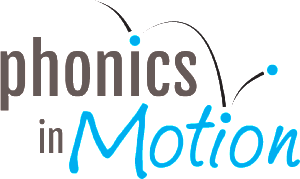Wondering how to teach reading through a multisensory approach? Helping children develop top-notch reading & writing skills is essential. Phonics in Motion (PIM) emerges as a vibrant and engaging approach, tailored to captivate young minds while fostering foundational reading and writing abilities. It’s a method designed not only for homeschoolers but also for educators seeking […]
Read moreWhat Is Phonics And How Do You Teach It?
If you’ve ever been faced with teaching a child to read, you’ve probably found yourself asking “What is phonics and how the heck do I teach it?” Let’s explore how to effectively teach this crucial skill through transformative literacy routines that emphasize kinesthetic learning and engage students in the fascinating world of reading and […]
Read moreHandwriting Practice Through Storytelling: Pre K – 3rd Grade
Handwriting practice remains significant in today’s modern world, where keyboards and touchscreens have become ubiquitous in our daily interactions. It might appear that the traditional art of handwriting is losing its importance, but as teachers, we must not underestimate its value. Handwriting practice goes beyond simply developing legible penmanship; it plays a pivotal role in […]
Read moreMastering Digraphs: Boosting Reading and Spelling Success
Digraphs play a vital role in developing strong reading abilities. They are the key to expanding vocabulary, improving reading fluency, and mastering accurate spelling. However, digraphs can pose significant challenges for both students and teachers. For students, learning digraphs can be difficult due to the unique nature of these letter combinations. For teachers, the […]
Read moreEarly Reading Strategies: Enhancing Reading Proficiency and Comprehension
Reading strategies are crucial to empower individuals to access information, explore new ideas, and engage with the world around them. To become proficient readers, students need more than just the ability to decode words; they require a range of strategies that help them navigate texts, comprehend meaning, and extract valuable information. In this article, we […]
Read moreWhat Is Differentiated Instruction?
Differentiated instruction is the key to helping students become successful readers and lifelong learners. Teaching literacy to young students is a crucial task that lays the foundation for their lifelong learning. However, not all students learn at the same pace or have the same strengths and weaknesses. This is where differentiation comes into play. Differentiated […]
Read morePhonics For Kids: Choosing A Curriculum
Phonics instruction is one of the crucial components of a child’s educational journey. Phonics teaches children the relationship between letters and sounds, enabling them to decode and comprehend written words. With numerous literacy curricula available, choosing the right one can be overwhelming. When choosing a literacy, look for a defined scope & sequence, explicit teaching […]
Read moreWhy Is Phonological Awareness Important?
Phonological awareness is an essential early literacy skill that children need to develop before they can learn to read. It involves the ability to recognize and manipulate the sounds of language, which includes recognizing and producing rhymes, breaking words into syllables, and identifying individual sounds within words. Phonological awareness is critical for developing reading and […]
Read moreReading Strategies For Struggling Readers
Reading strategies for struggling readers is a hot topic.One of the biggest questions we hear from teachers is “How do I help struggling readers in my class?” It is difficult to juggle a class full of students at varying literacy levels, and many literacy curricula aren’t developed with the flexibility to allow teachers to adjust. […]
Read moreClassroom Management Strategies
Ever wonder what the missing ingredient is to your classroom management? As teachers, we all have our strengths and our growing edges. We all have the drive to improve and offer the best educational opportunities that we can to our students- otherwise, you wouldn’t be spending your precious time reading and thinking about your professional […]
Read more
